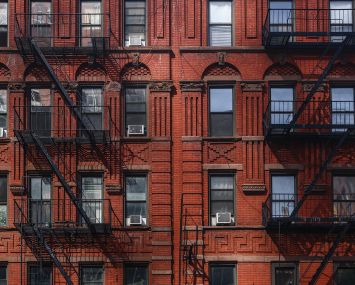Well folks, here we are nearing the close of another year. The economy has gained some traction nationally no thanks to our leaders (and I use the term loosely) in Congress.
New York City will soon have a new mayor (should prove interesting). And new construction is popping up everywhere – though generally on the residential side, many assume. But is that really the case? I thought I’d take a more detailed look at where Manhattan stands with its new and potential office construction.
In 2013, Manhattan will add a total of 5.1 million square feet of brand new office product. A few weeks ago I discussed three of those properties which were included in Newmark Grubb Knight Frank’s third quarter figures. The final puzzle piece will be 4 World Trade Center. Combined, this is the largest amount of new space in a single year since way back in 1989 when 5.4 million square feet was added. And according to your crack research team at NGKF, this is likely to be the largest amount in a single year through 2017. Let’s face it – after that date, the math gets rather fuzzy though we have slotted in around 16.4 million square feet that could be delivered between 2018 and 2023. Many of the proposed buildings will go up only if there is a strong economy (jobs, jobs, jobs) and, most importantly, an anchor tenant (likely poached from a current building or buildings).
This raises an important point – where are all the worker bees coming from to fill these new towers of power? Manhattan hasn’t exactly had the most dynamic net absorption over the past few years. Though we’ve been adding jobs like crazy in NYC, most have been in non-office sectors (in fact, year to date, 10.6 percent of the jobs added were office positions compared to 50-60 percent in the late 1990s). Furthermore, our inventory has grown even without new construction. Thanks to the re-measurement of buildings (an ever-increasing loss factor), spaces have magically gotten larger (a story for another column). Finally, don’t forget about “space efficiency” (aka cramming as many people into the smallest amount of square footage possible).
Not long ago I visited several other offices with open floor plans. Whole departments were essentially housed on one long bench with five or so people on either side of it (these weren’t tech firms or trading floors). Yes, the space was beautiful. Yes, the floor-to-ceiling windows let in lots of light. And yes, there were ample breakout rooms – big and small. This may be efficient use of space, but in terms of humanity, it seemed to me the equivalent of sitting on a plane in coach for 10 hours straight day in and day out. Okay – back to our regularly scheduled column.
Now that I’ve gotten all those negative points out of the way (note to self – lookout for developer wanting to denounce me as a heretic), let’s talk about why adding new product should and will happen. First, new green technologies make buildings much more energy efficient and provide greater tenant comforts while reducing operating costs. Add to this the fact that many new developments are near transit hubs and/or are designed as mixed-use which cuts down on commuting time and use of fossil fuels. And another big one – a number of “not so old” office buildings are slated for residential conversion. The removal of 15 million square feet from office inventory happened thanks to tax breaks in Lower Manhattan from the 1990s through the next 20 years. This is sheer economic fundamentals: We need housing and these buildings are worth more as such. Thus you have properties like 1 Chase Manhattan Plaza and 550 Madison Avenue likely to be pulled from the office column into the residential/hotel column.
But don’t panic. All will likely not be built in the time frame discussed. Market forces, more than ever before, will take care of the issue. Now get back to your 20 square feet of personal space at your efficient office and do some work.


